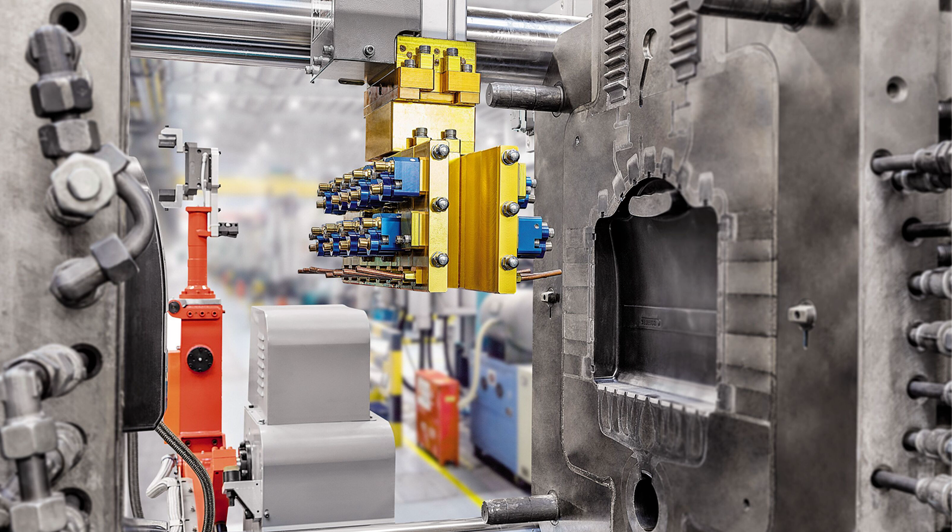Pressure die casting is a manufacturing process that is utilized to produce complex and intricate metal parts in large quantities. The process involves the use of high-pressure and high-speed injection of molten metal into a steel die. The die is typically made of two halves and has cavities or impressions that shape the final product. To ensure that the product is of high quality and has a smooth finish, die coats are applied to the die before the casting process begins. This article discusses the importance of die coats in pressure die casting.
What Are Die Coats?
Die coats are surface treatments that are applied to the steel die in pressure die casting. The purpose of die coats is to protect the die from wear and corrosion and improve the release of the final product from the die. A die coat is a thin layer that is applied to the surface of the die using various methods such as spraying, brushing, or dipping. The material used to make die coats varies depending on the type of metal being cast and the casting process used.
Types of Die Coats
There are different types of die coats that are used in pressure die casting. These include:
1. Graphite-based Die Coats
Graphite-based die coats are the most common type of die coats used in pressure die casting. They are made of graphite particles and a binder that is applied to the die surface. Graphite-based die coats provide excellent release properties and reduce the tendency of the metal to stick to the die surface. They are also easy to apply and do not interfere with the casting process.
2. Ceramic-based Die Coats
Ceramic-based die coats are used in pressure die casting of aluminum and magnesium alloys. They are made of ceramic particles and a binder that is applied to the die surface. Ceramic-based die coats provide excellent thermal insulation and reduce the heat transfer from the molten metal to the die surface. They also provide good release properties and reduce the formation of surface defects on the final product.
3. Water-based Die Coats
Water-based die coats are used in pressure die casting of zinc and lead alloys. They are made of water-soluble polymers and other additives that are applied to the die surface. Water-based die coats provide good release properties and reduce the formation of surface defects on the final product. They are also environmentally friendly and easy to apply and remove.
Importance of Die Coats
Die coats play a crucial role in pressure die casting. Some of the benefits of die coats include:
1. Protection of the Die
Die coats provide a protective layer on the die surface that prevents wear and corrosion. This extends the life of the die and reduces the need for frequent repairs or replacements.
2. Improved Release Properties
Die coats improve the release properties of the die surface, allowing the final product to be easily removed from the die. This reduces the risk of damage to the product and ensures that it has a smooth finish.

3. Reduction of Surface Defects
Die coats reduce the formation of surface defects on the final product. This is because they prevent the molten metal from sticking to the die surface and improve the flow of the metal into the cavities or impressions on the die.
4. Consistency and Quality of the Final Product
Die coats ensure that the final product is of high quality and has consistent dimensions and surface finish. This is because they prevent the formation of defects and ensure that the metal flows evenly into the die cavities.
Conclusion
In conclusion, die coats are an essential part of the pressure die casting process. They provide a protective layer on the die surface, improve the release properties of the final product, reduce the formation of surface defects, and ensure the consistency and quality of the final product. Graphite-based, ceramic-based, and water-based die coats are the most common types of die coats used in pressure die casting. The selection of the type of die coat to use depends on the type of metal being cast and the casting process used.
-

- Bicycle Freehub 12/14/16 Inch Children Bike Low Rider Bikes Magnesium Aluminum Alloy Children Bicycle 3-8 Years Old In Stock
-

- High precision magnesium thixomolding components UAV cover
-

- Magnesium alloy bike parts & componenets for kid’s push bike
-

- Magnesium alloy die-casting Auto parts RDM housing
-

- Magnesium alloy die-casting Auto parts headlight frame
-

- Die cast magnesium parts laptop housing cover D

 0086-750-5616188
0086-750-5616188 +86 13392089688
+86 13392089688 sales@zhongmei-tech.com
sales@zhongmei-tech.com







